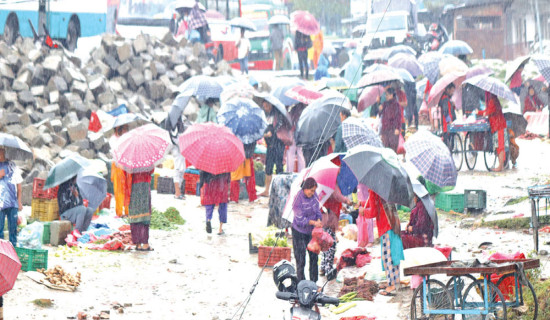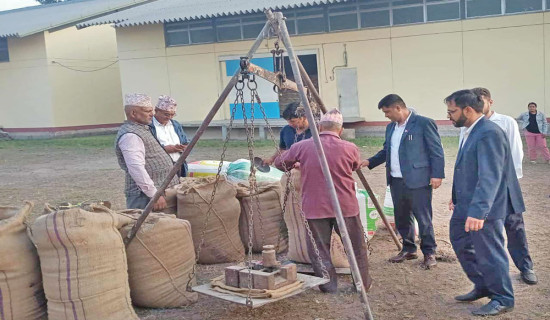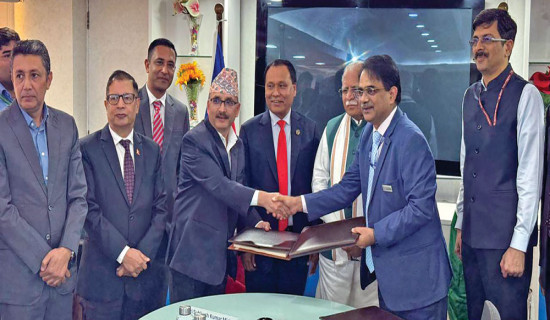- Wednesday, 19 November 2025
Poor infrastructure, scant amenities limit Nepal’s tourism potential
Kathmandu, Feb. 9: Nepal, rich in natural beauty and cultural heritage, has long been a popular destination for tourists seeking adventure, spirituality, and scenic beauty. However, the country’s tourism growth has been hampered by poor infrastructure, particularly in terms of transportation, airports, and basic amenities.
The experts maintain that the biggest obstacle to tourism development in Nepal is its underdeveloped road network and lack of an efficient transportation system.
While the country’s attractive spots like the Annapurna Circuit, Everest Base Camp, Pokhara, Lumbini, and Chitwan attract tourists from all over the world, these destinations often lack good roads and other tourism infrastructure, which has hindered tourism growth. The lack of smooth, reliable roads not only delays tourists’ journeys but also causes inconvenience, they said.
In addition to road access issues, Nepal’s airports, particularly Tribhuvan International Airport in Kathmandu, are struggling to meet the demands of international and domestic travelers. With limited capacity and congestion during peak travel seasons, the airport fails to provide a seamless experience for tourists. Long immigration lines, inadequate baggage handling, and a lack of modern amenities further contribute to frustration upon arrival, said tourism experts.
Besides, nearly two dozen domestic airports are not operational, and even those that are operational have limited flights.
President of Trekking Agencies’ Association of Nepal (TAAN) Sagar Pandey expressed concern about the inadequate tourism infrastructure in the country.
As infrastructure development is the backbone for the promotion of both domestic and foreign tourists, poor infrastructure, including road transport, airports and others are hindering the growth of tourism in the country.
The situation is further aggravated by a lack of basic amenities like clean and accessible toilets in key tourist spots. Visitors frequently report difficulties in finding proper facilities in rural areas or on trekking routes, which significantly impacts their overall experience, said Mani Raj Lamichhane, director of Nepal Tourism Board.
The lack of proper connectivity from the airports to popular destinations is another bottleneck in tourism development, he said.
Underdeveloped roads, natural calamities threaten tourism recovery
Nepal's main gateway, Tribhuvan International Airport, is often congested, and getting to tourist hotspots like Pokhara or Chitwan can be time-consuming and exhausting.
The limited availability of direct transportation options between major tourist hubs only adds to the challenge. As a result, many travelers choose to spend more time in Kathmandu, leaving out opportunities to explore other regions of Nepal.
"It will take more than 10 hours to reach Pokhara from Kathmandu (200 KM) via road which makes tourists unhappy. If the road would be smooth, they could reach the destination with comfortable movement and spend their time for visiting many spots," said Lamichhane.
There are luxurious buses operating from Kathmandu to tourist destinations such as Pokhara, Lumbini and Chitwan.
But the delays in road maintenance in these destination are discouraging tourists to visit them, Lamichhane added. "Roads are blocked time and again by landslides and rainfalls, this is also affecting the tourist arrivals in Nepal," he said.
The last week of September witnessed a series of landslides triggered by the continuous monsoon, blocking key highways and leaving many popular tourist destinations isolated. The disruption of vital transportation links has led to a noticeable decline in the number of tourists visiting Nepal, he said.
He said that plane crash, landslides and floods and Indian bus accident in 2024 caused loss of tourist arrival by 5-7 per cent in 2024 which frustrated the plan to recover tourist arrival of pre-pandemic level in Nepal.
Pandey expressed concern about the impact of such natural calamities on the tourism sector, which has been recovering from the effects of the pandemic.
The situation has raised calls for more sustainable infrastructure development and improved road management to prevent frequent disruptions during the monsoon season, he said.
According to latest World Tourism Barometer from UN Tourism, an estimated 1.4 billion tourists travelled internationally in 2024, indicating a recovery (99 per cent) of pre-pandemic level.
In Nepal, tourist arrival recovery stood at 96 per cent of pre-pandemic level.
According to Nepal Tourism Board, Nepal welcomed over 1.147 million tourists in 2024, marking a significant recovery and growth of nearly 13.1 per cent compared to the previous year. A total of 1,014,882 foreign tourists had visited Nepal in 2023. A total of 1.197 million foreign tourists had visited Nepal in the fiscal year 2019/20.
Hotel expansion focused only in urban areas
Sachindra Yadav, senior divisional engineer, Planning Infrastructure and Monitoring Section, Department of Tourism, said facilitating hotel development in conservation areas and remote destination would be a step in the right direction for both the tourism industry and environmental conservation.
"By allowing the private sector to participate in building sustainable infrastructure, we can provide tourists with a better experience while ensuring the protection of our natural heritage," he said.
Stating that the number of luxury hotels has been increasing in recent years, especially in Kathmandu, Pokhara and Lumbini, he said that such hotels with facilities should be opened and operated in remote tourist destinations, including Lukla and Manaslu.
Such infrastructure construction will help not only in bringing in more tourists, it will also increase the number of tourists staying there and increase their spending, he said.
According to the Department of Tourism, more than a dozen luxurious hotels, including four-star and five-star ones, were registered and came into operation in a year.
Additional seven five-star and six four-star hotels came into operation in the last one year since October 2023. Nepal's hospitality industry is rapidly expanding, with available hotels having capacity to accommodate over 3.5 million tourists annually, according to Hotel Association Nepal (HAN).
"The role of the private sector in tourism infrastructure is important in tourist destinations. However, the government should develop access roads to the destinations and facilitate the private sector in building hotels and other infrastructure," he said.
Currently, the Department of Tourism is planning to develop hill stations in all seven provinces, he said.
Almost two dozen airports remain closed
Amid growing concerns over Nepal's aviation sector, a significant number of airports in the country remain closed, severely impacting domestic and international air travel. Of the total 55 airports across Nepal, above 20 are currently not operational, creating travel disruptions for both passengers and airlines, according to latest report of the Civil Aviation Authority of Nepal.
Airports built in the past spending millions of rupees in Baglung, Chaurjahari (Rukum), Darchula, Dhorpatan, Palungtar (Gorkha), Jiri, Kalikot, Kamal Bazaar, Kangeldanda, Khiji Chandeswori, Langtang, Lamidanda, Mahendranagar, Manang, Masinechar (Dolpa), Meghauli, Rolpa, Rumjatar, Syangboche and Tikapur are now not in operation.
Hansa Raj Pandey, deputy director general and spokesperson at CAAN, said that out of the 52 domestic airports, 11 are medium-sized airports where only ATR aircraft can fly, while there are 41 airports with small runways.
He said that out of the 41 airports, only 28 airports are blacktopped and 13 are unpaved.
"Due to the lack of aircraft, even 10 of 28 blacktop airports have not been operational. If airline companies add aircraft and operate regular flights, these airports can be immediately brought into operation," he said. He said that due to the lack of aircraft, regular flights have not been operated at other airports that have been operational.
In particular, smaller domestic airports, often used for domestic flights, are facing significant delays, cancellations, and diversions as airlines are left with fewer operational airports to land in, he said.
The CAAN has acknowledged these issues and is reportedly working on improving infrastructure and addressing safety concerns. However, it remains unclear when all airports will be fully operational again.
Meanwhile, Gautam Buddha International Airport and Pokhara International Airport have become operational. However, these airports are not yet fully operational. After TIA became operational at full capacity, the government has started expanding TIA with the aim of operating more flights.
CAAN Spokesperson Pandey said that no matter how much TIA is expanded, it is not possible to increase the number of flights, so there is no alternative to fully operating Gautam Buddha and Pokhara international airports.
"Infrastructure expansion at TIA has been ongoing for years. TIA has only one runway and it is not possible to expand it and build another one. Therefore, work is currently underway to construct a taxiway to facilitate aircraft takeoff and landing," he said.
"It's not just the airports that cause the problem, there are no well-equipped airlines operating in Nepal either. Many of the world's richest people want to travel on well-equipped planes and come with their own chartered flights. However, as such well-equipped planes are not operating in Nepal and there is no situation to allow chartered flights, it has not been possible to bring such wealthy visitors," Lamichhane said.
NAC must be strengthened
TAAN President Pandey stressed the need of making the national flag carrier - Nepal Airlines Corporation – strong by restructuring it as many countries in the world are making their national flag carriers strong for tourism promotion.
"If NAC is revived and operates flights to more destinations around the world, it will reduce not only air fares but also help make private sector airlines competitive," he said.
Meanwhile, the Civil Aviation Authority of Nepal should focus on encouraging airline companies to increase flights.
"If the government creates an environment by investing heavily in infrastructure like roads, bridges and airports, then the private sector will increase its investment to facilitate tourists in destinations," he said.



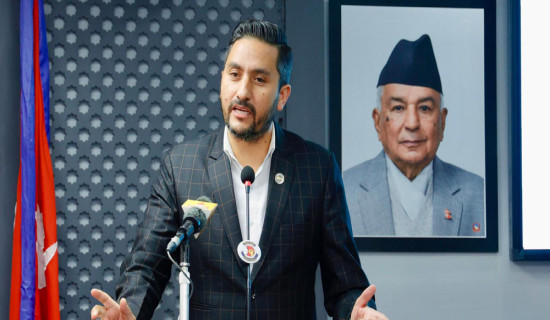
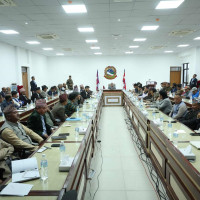
-square-thumb.jpg)


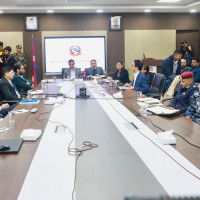
-original-thumb.jpg)
-original-thumb.jpg)

